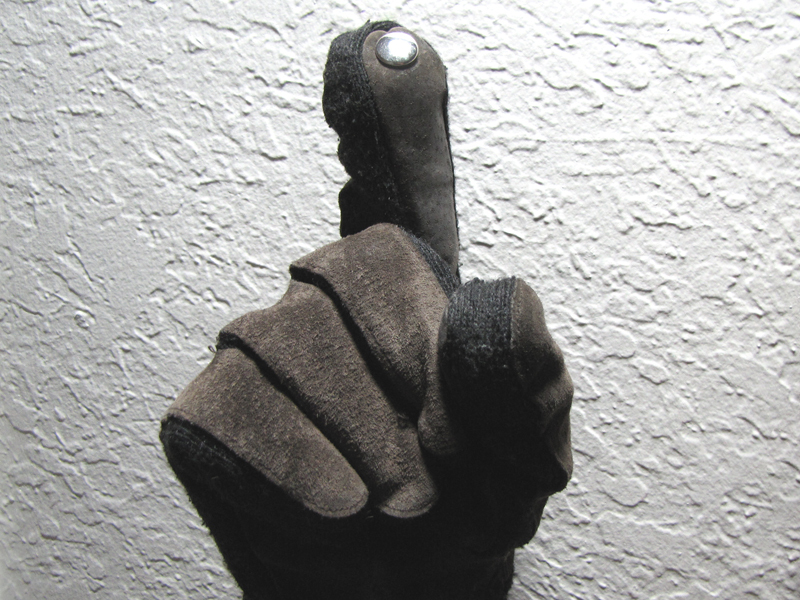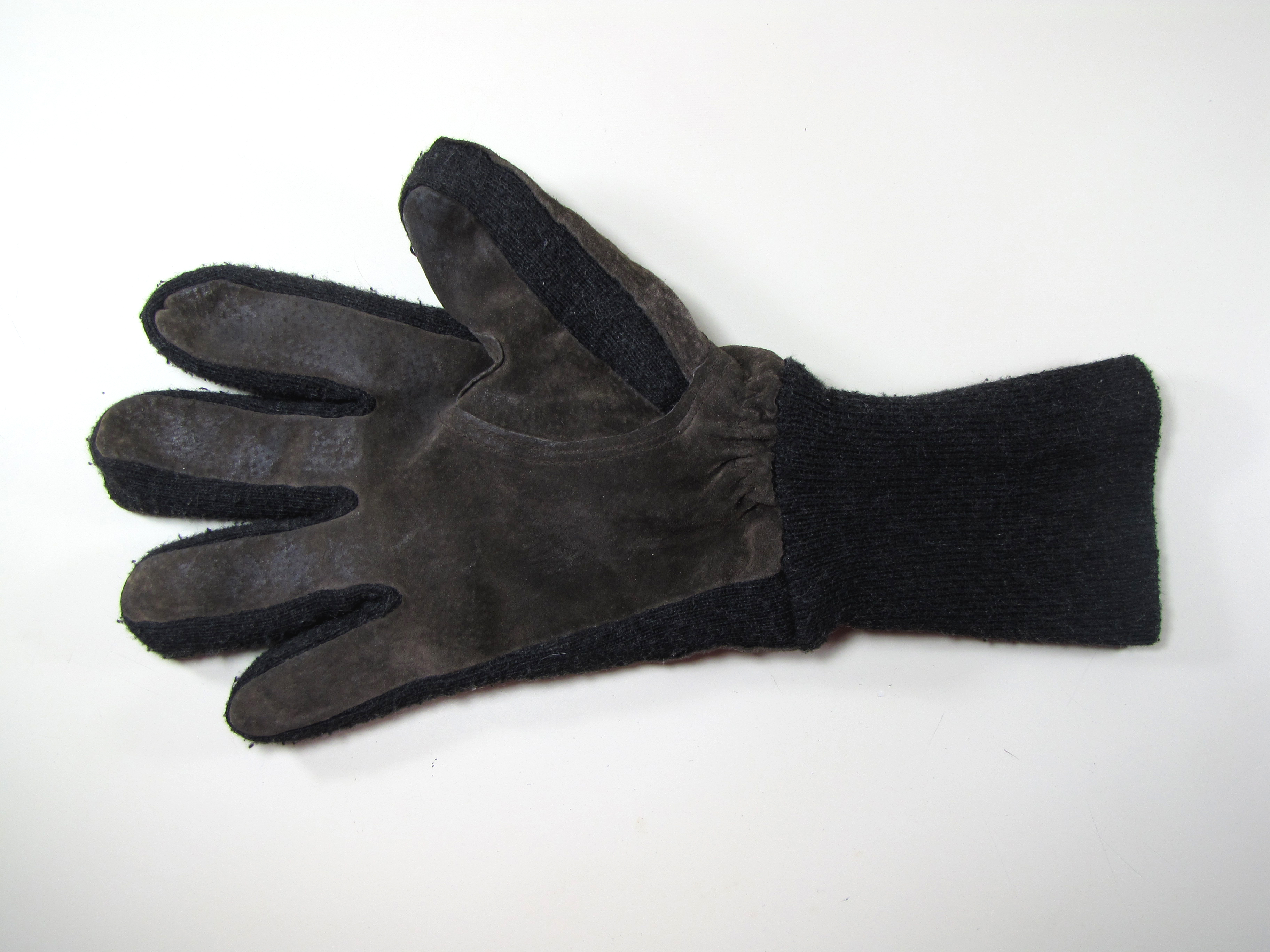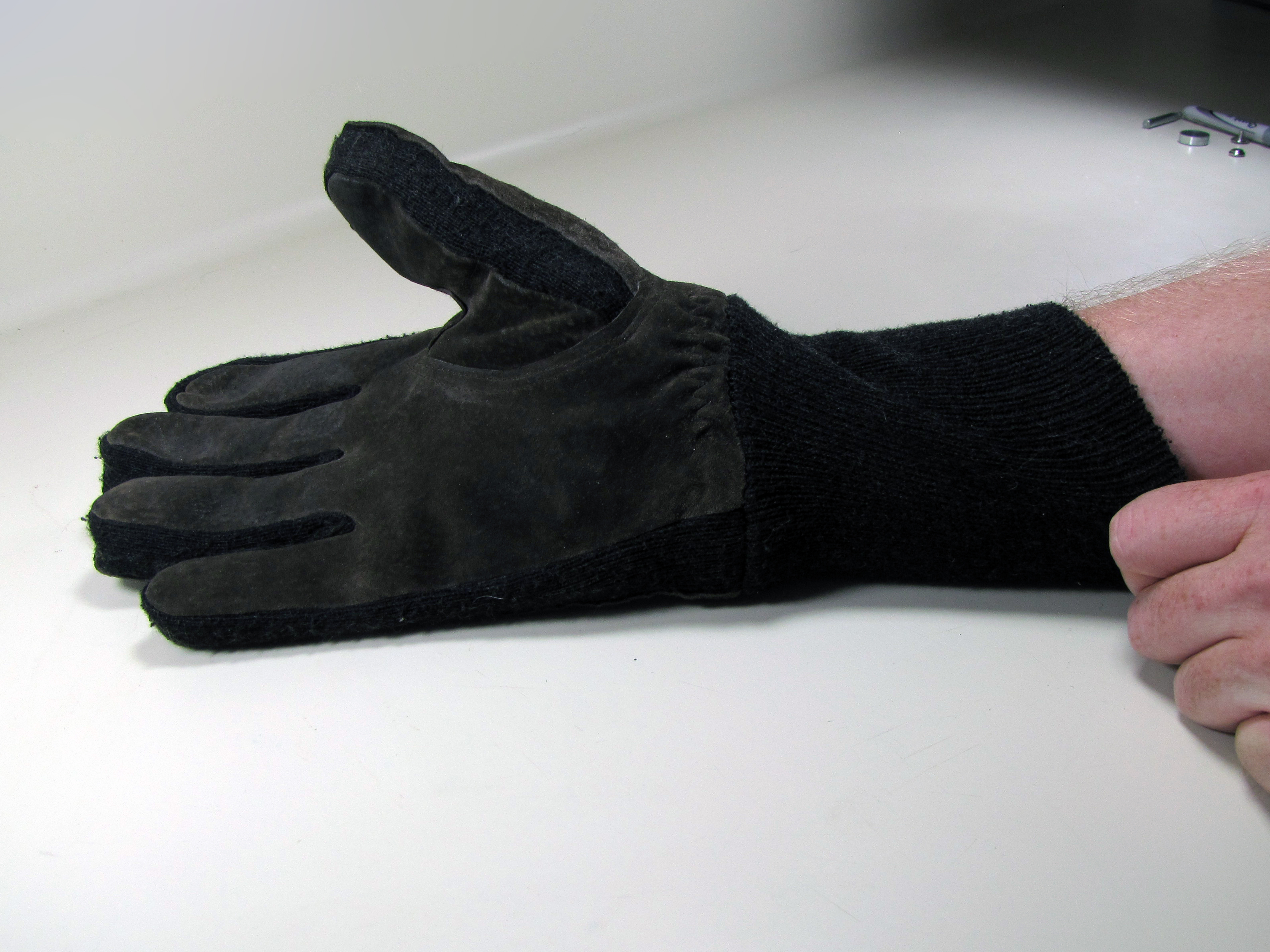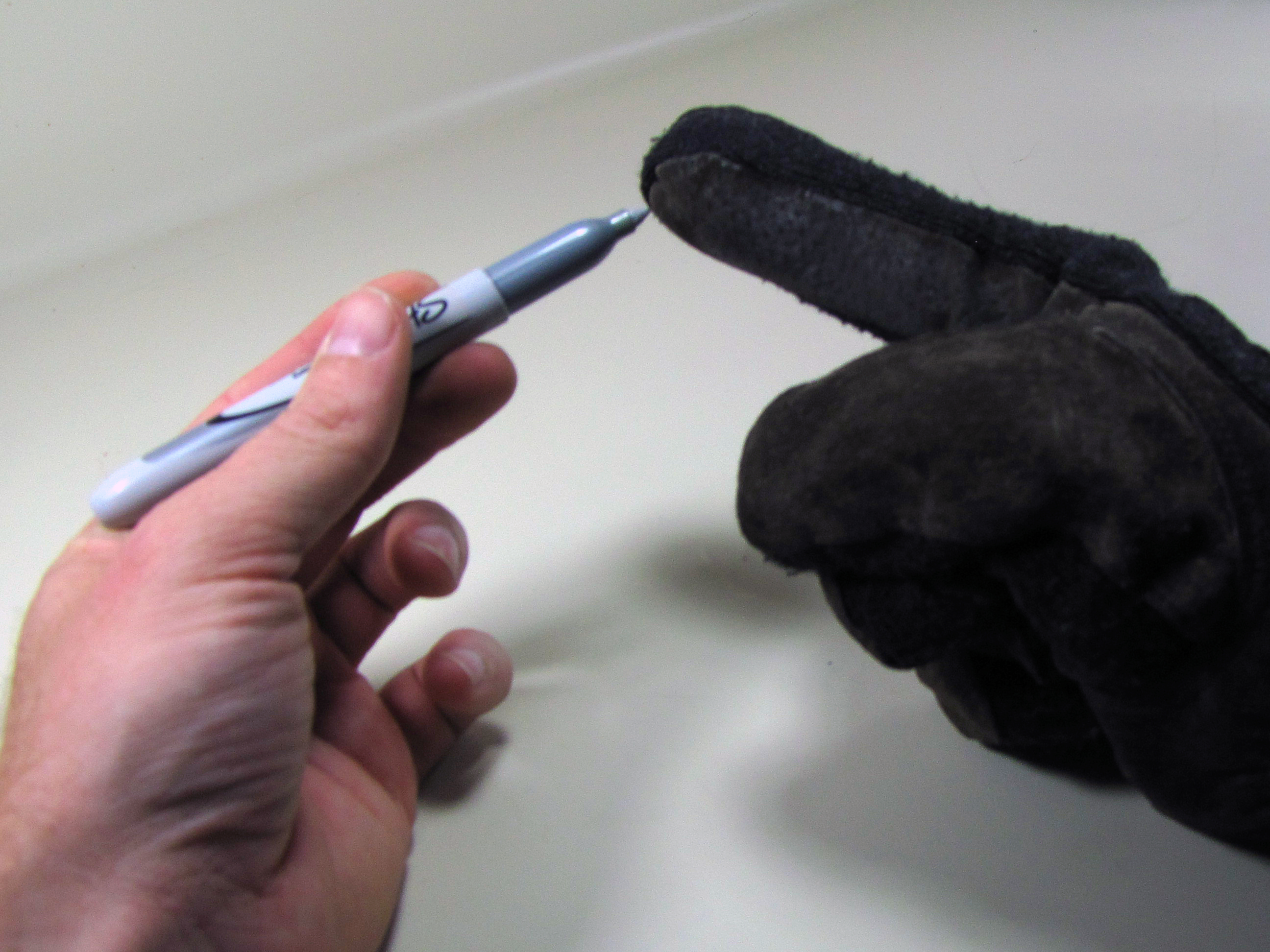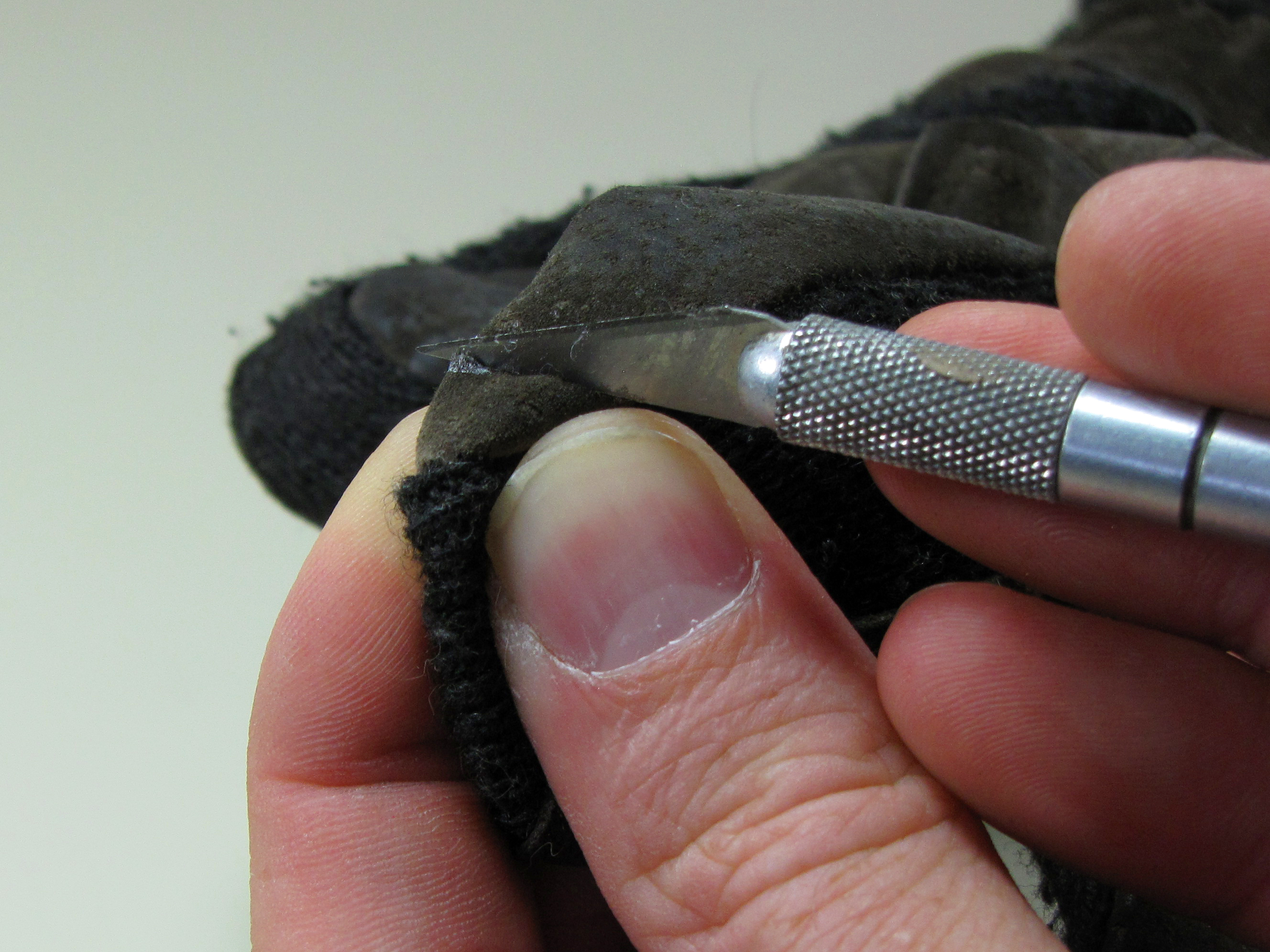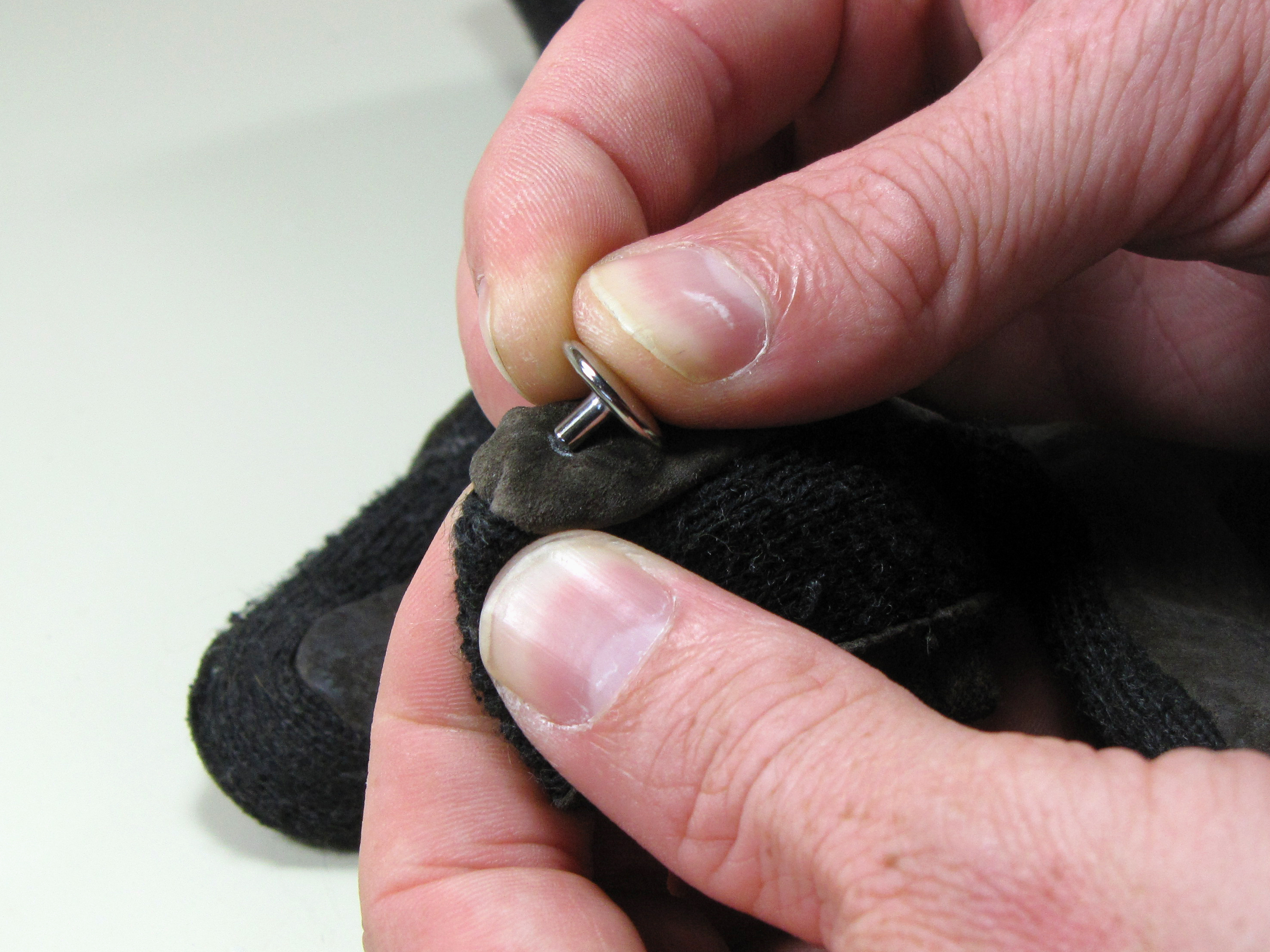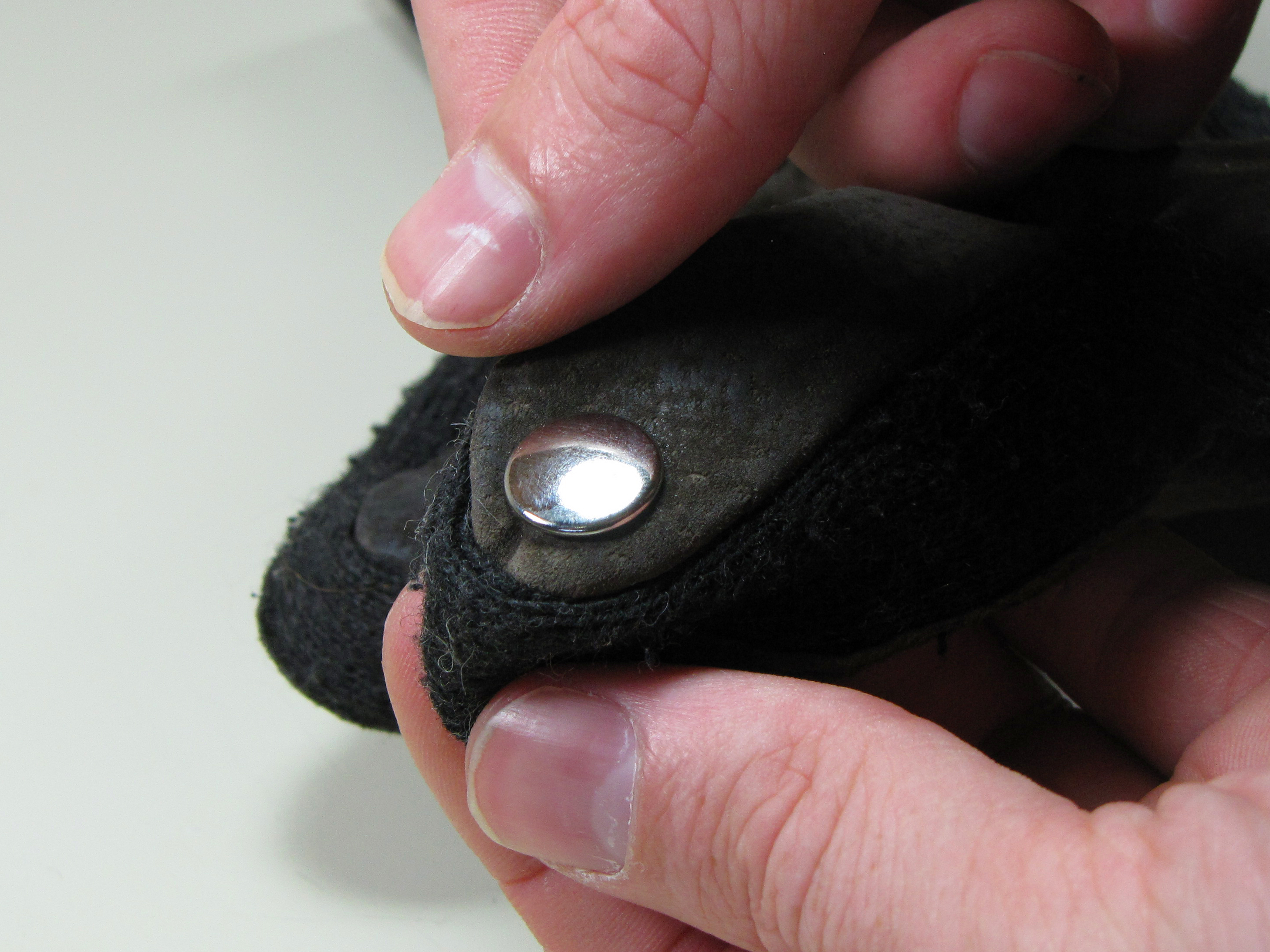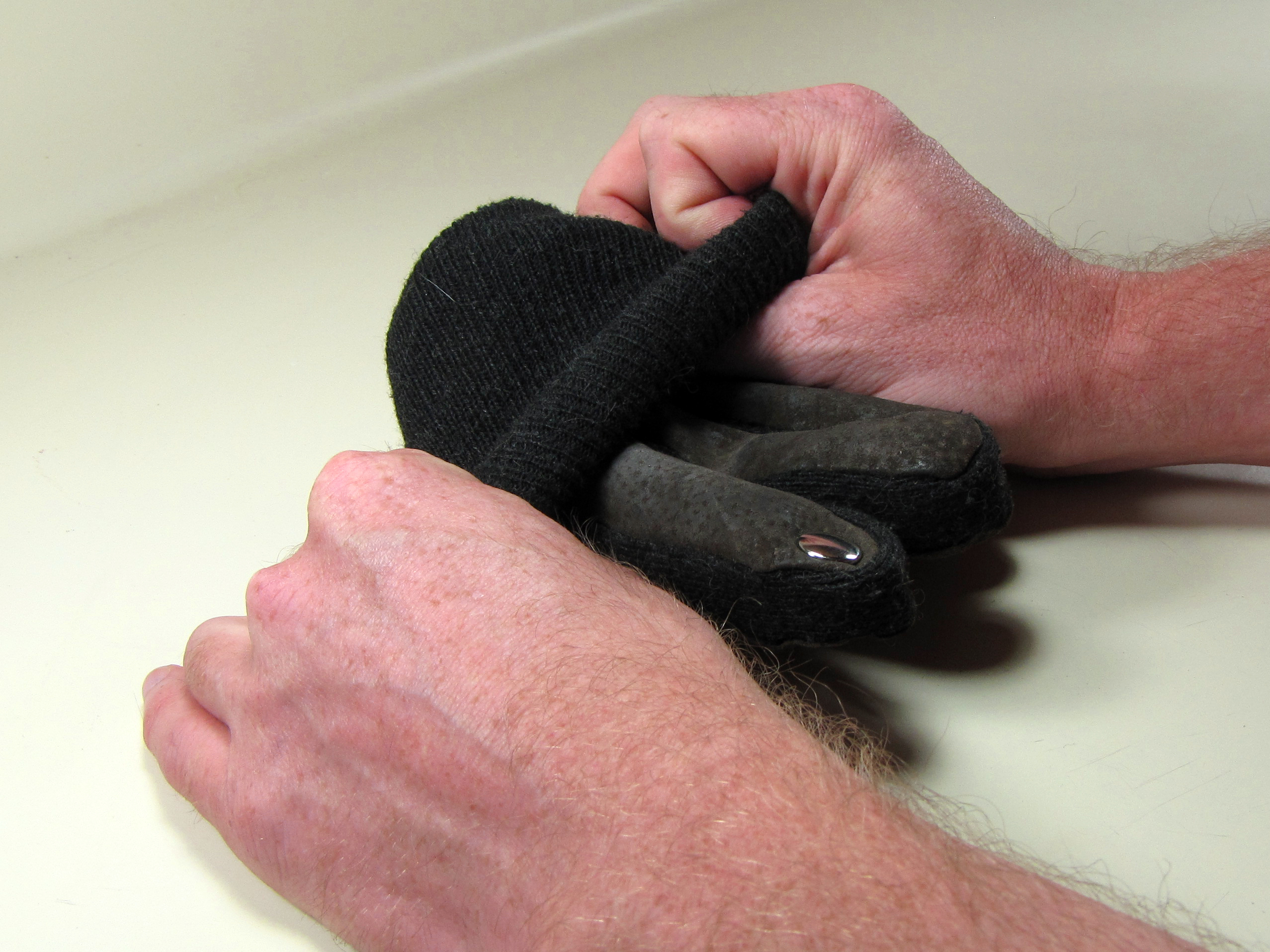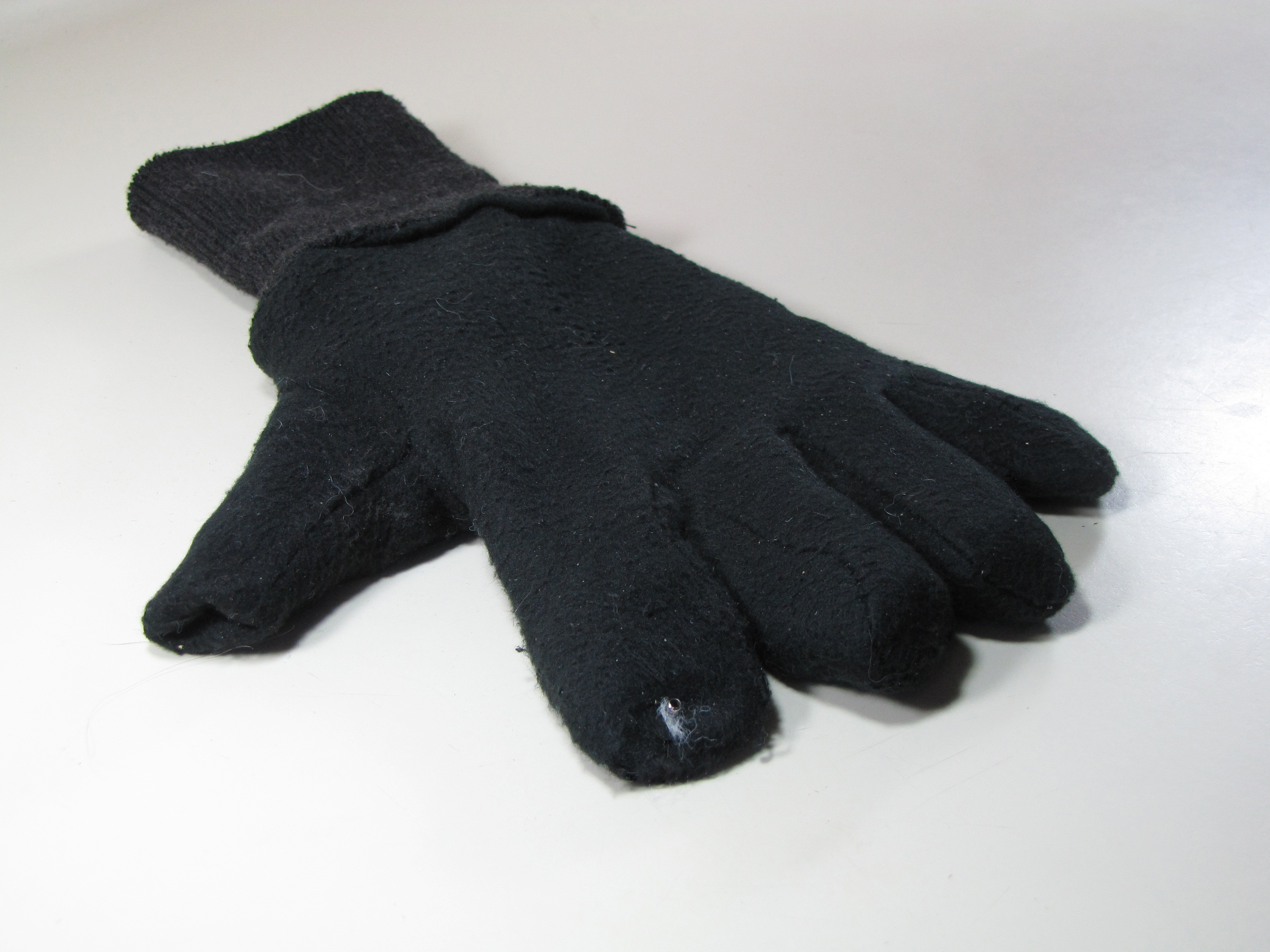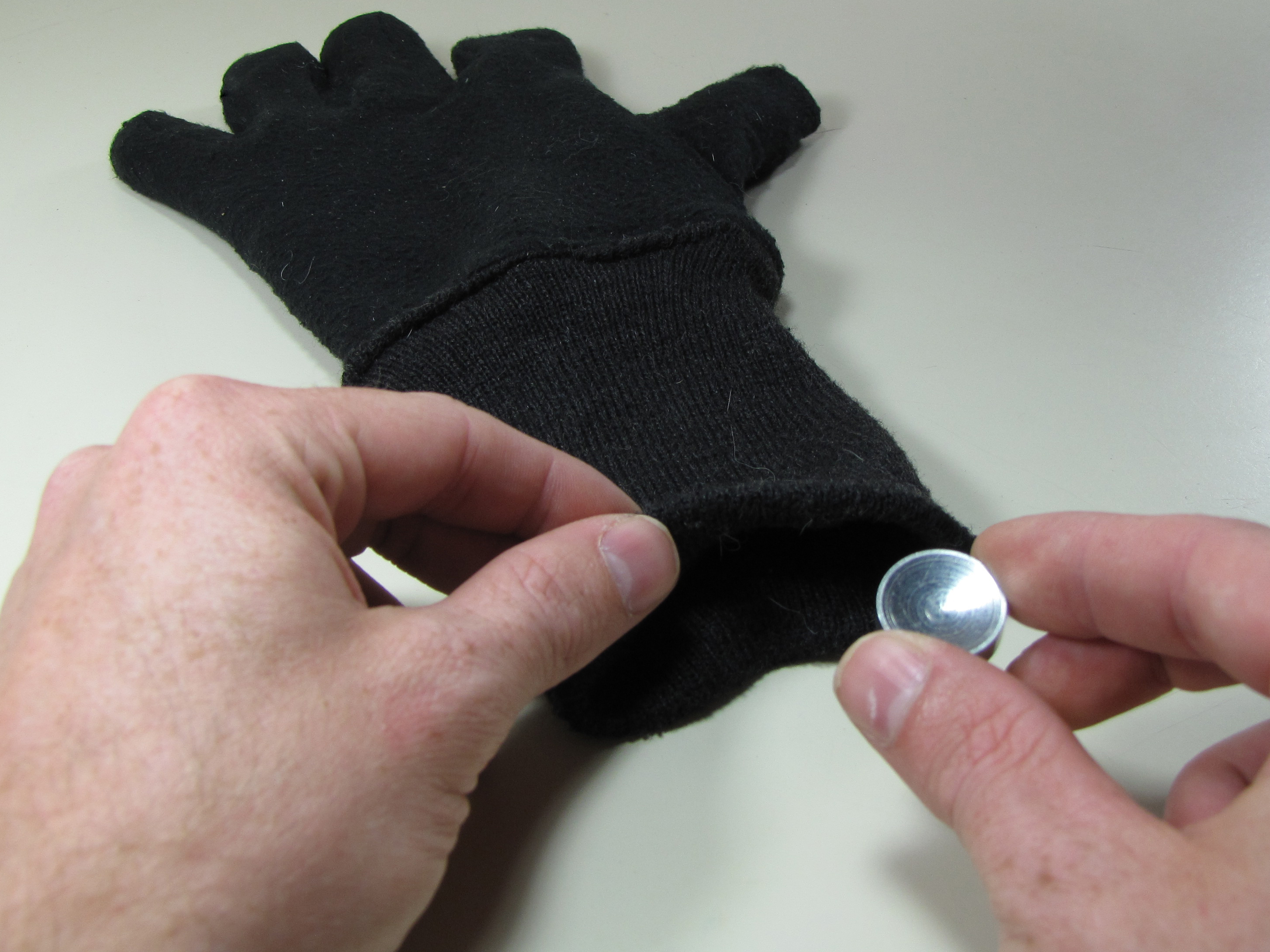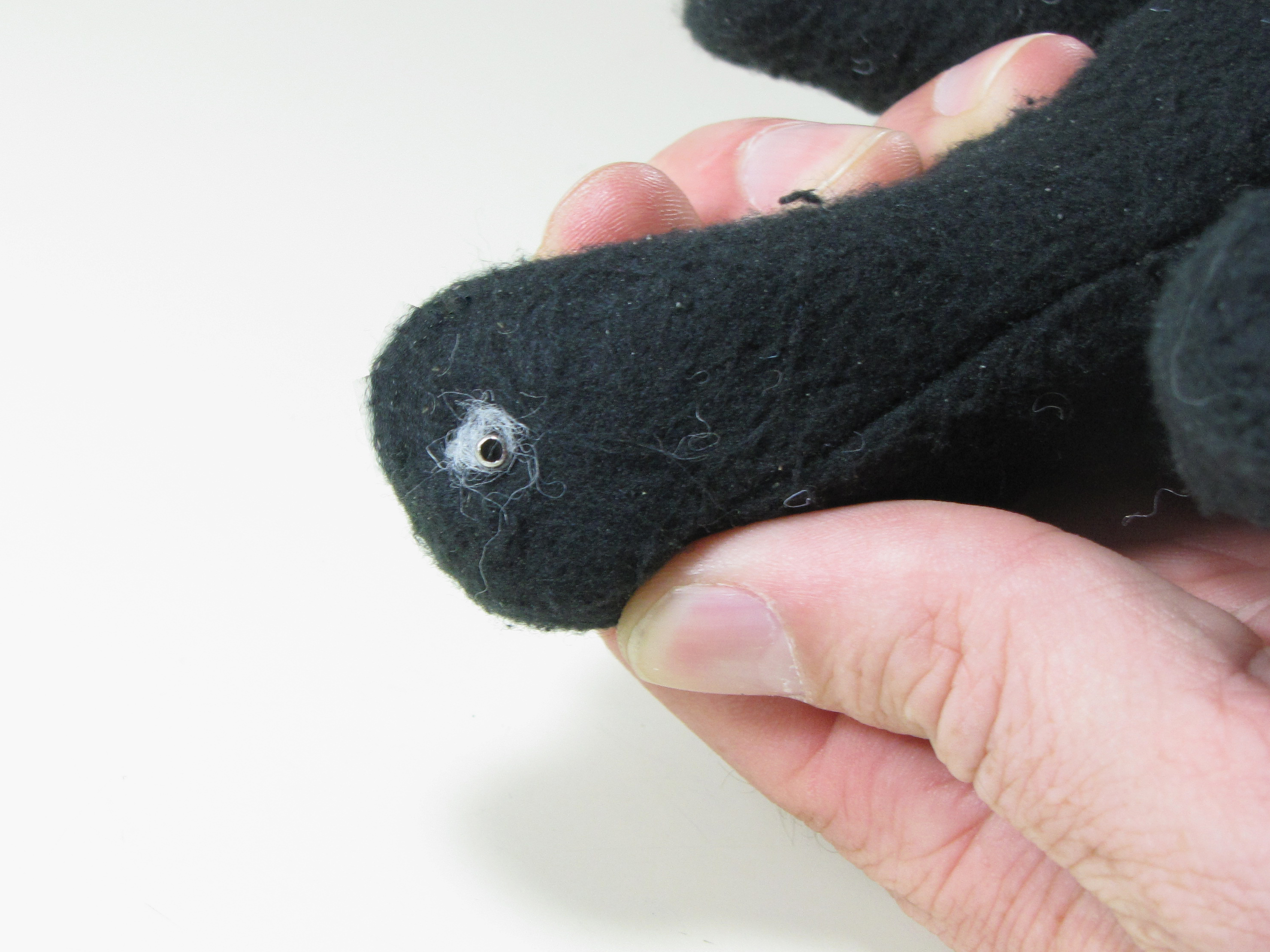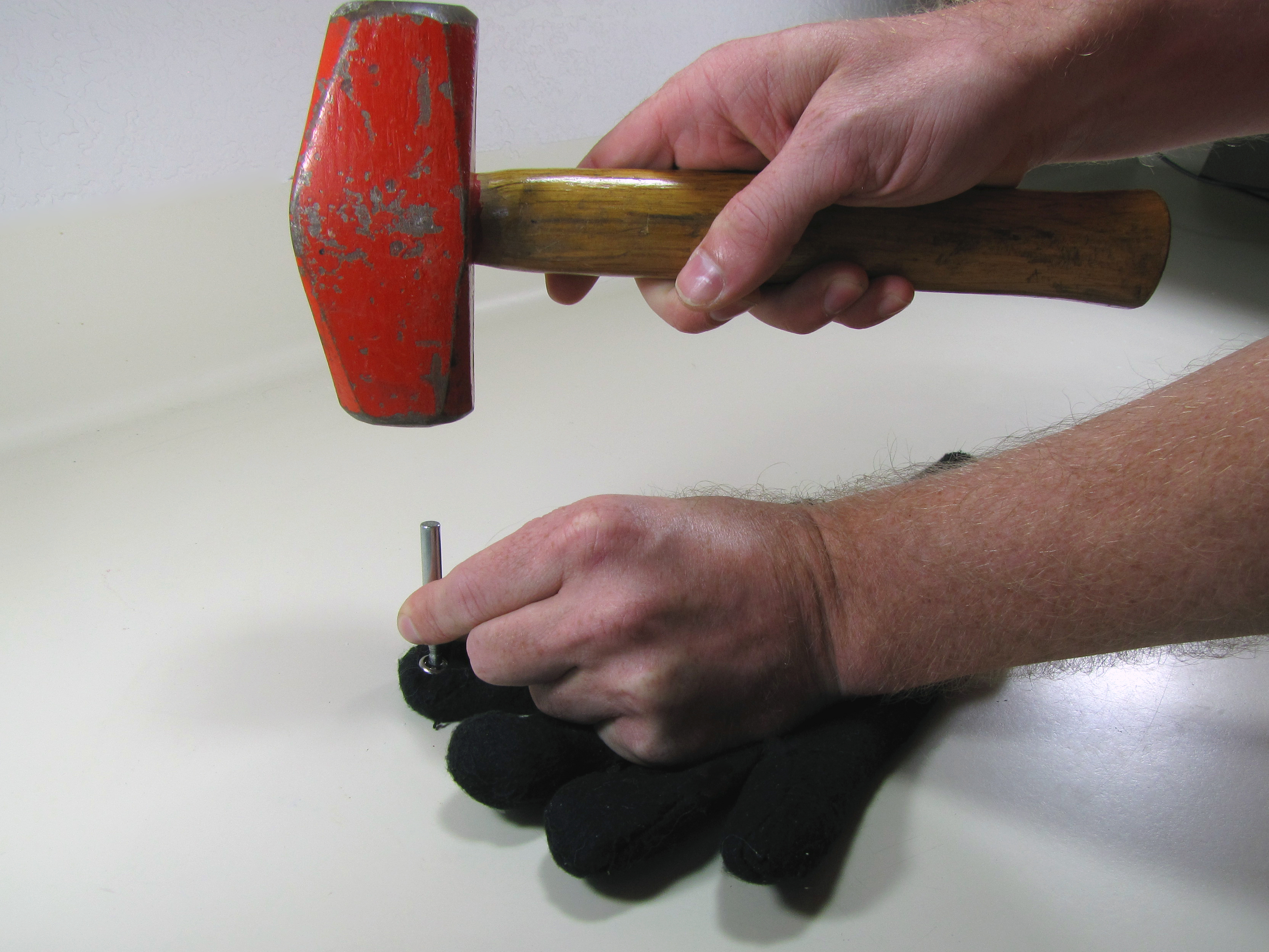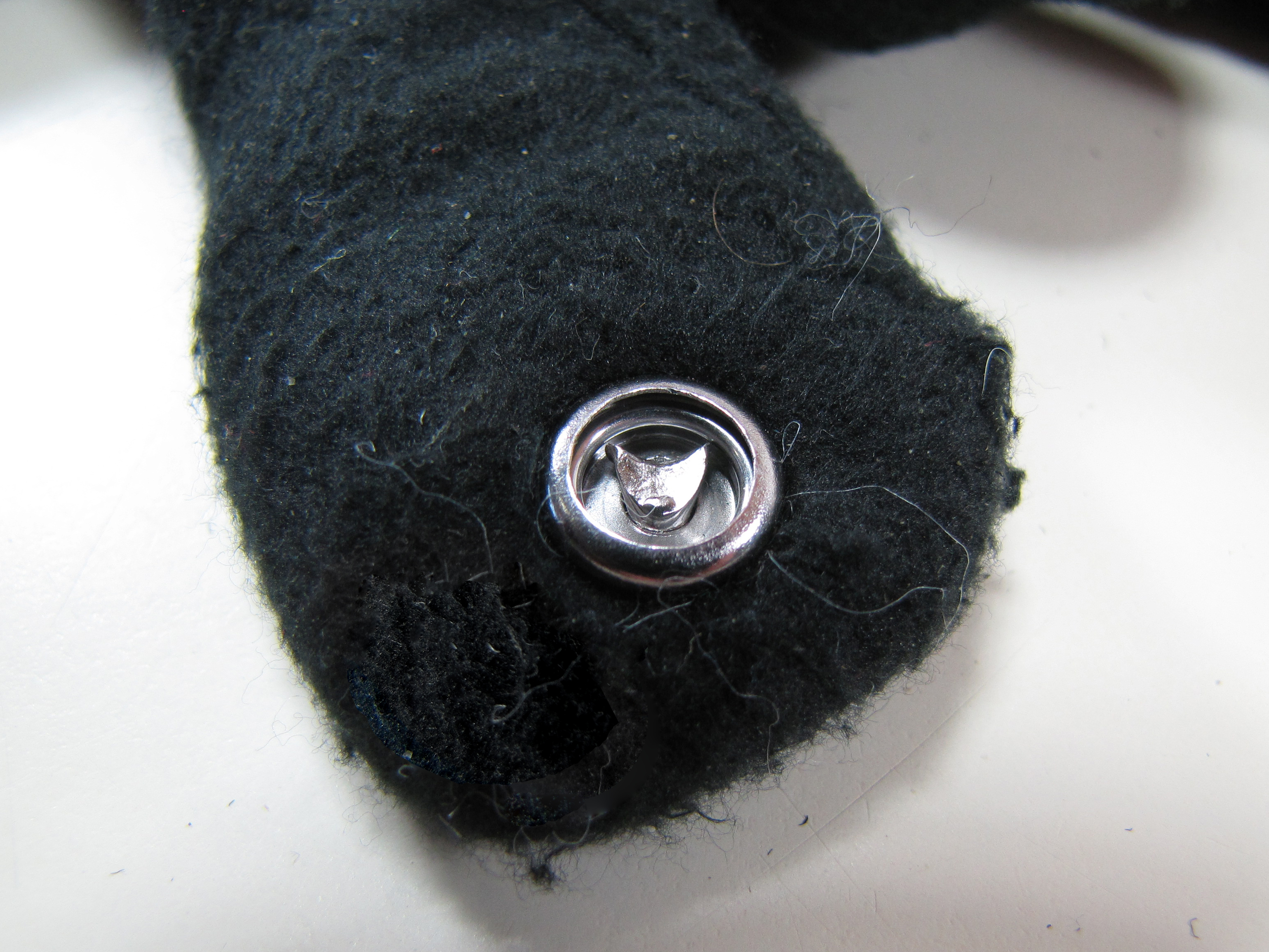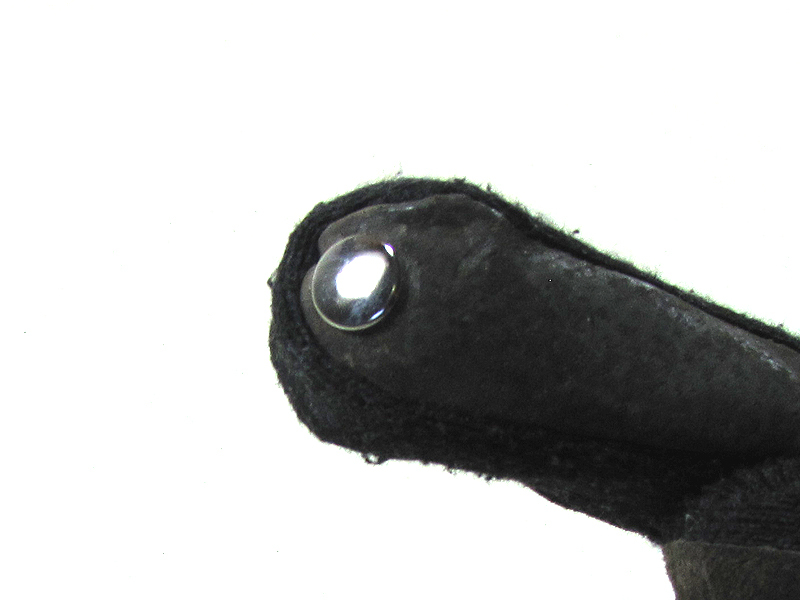To make capacitive touchscreens work through gloves, you need a conductive pathway between the screen and your finger(s). Commercial touchscreen-friendly gloves made with conductive fabric at the fingertips are available, and if you’re handy with a needle you can use special thread to sew conductive stitches into the fingertips of a glove you already own.
If you’re not handy with a needle, this no-sew “hard” method, using the button or “cap” half of a snap fastener, may be more your style. Depending on your skills and personal tastes, it may come out better- or worse-looking than the “soft” method. In any case, it will certainly be faster, and, applied to a nice pair of new gloves, makes for a useful gift with a personal handmade touch. You can, of course, add snaps to as many of a glove’s finger- and/or thumb-tips as you please, which may be useful for multi-touch displays.
The round lip of the snap socket inside the glove makes it very easy to index your fingertip with the “sweet spot” on the outside of the glove, and the hard, rounded surface of the button means the actual point of contact with the screen is small and precise. There’s no “fat fingers” effect with these gloves, and I’ve found that they require almost no mental adjustment to go back and forth between gloves and bare fingers. Finally, I should mention that the brass and/or nickel these snaps are made of should pose no risk of scratching even the softest glass.


